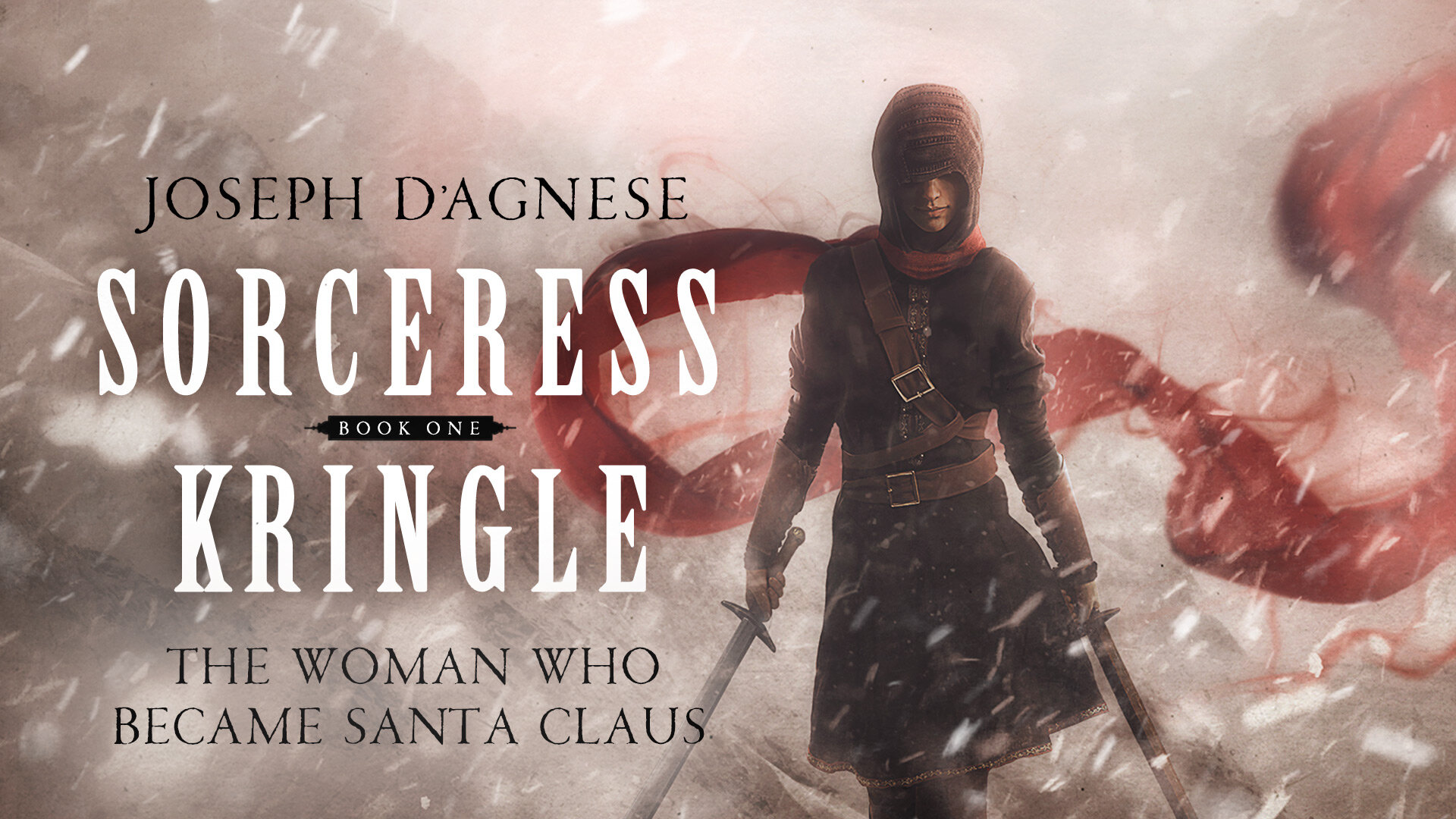My new historical fantasy novel about a female Santa Claus pubs today–the eve of St. Nicholas–and I thought I’d take the time to lay out the case for a female Santa Claus, and maybe clarify (if only to myself) how I even came up with such an idea. Some thoughts on the subject follow, and with it, I hope, some insight into this writer’s mind and process.
I think the seeds of the idea are rooted in my childhood. My mom grew up in Italy believing not in Santa Claus but in La Befana—a broom-riding female witch who brought presents to children on the eve of the Epiphany, i.e., the day the Magi encountered the Christ child in the manger. When Denise and I lived briefly in Italy, we’d see these adorable Befana dolls sold in Christmas markets in Rome.
It took me six years and three rewrites to get this book right. During that time, I learned that researching the history of Christmas sometimes feels like partaking in a massive, multi-century, international game of telephone, where language is constantly being corrupted and reframed for new purposes. The German-named Christkindl is a traditional European gift-bringer who is a kind of fae-like personification of the Christ child. But you could not ask for a more gender-ambiguous name than its corruption: Kris Kringle.
Similarly, the name Santa Claus is a corruption of the Dutch Sinterklaas (i.e., Saint Nicholas). But when I was growing up, my mom always referred to female saints as Santa Maria, Santa Teresa, Santa Cecilia. Male saints were San Francisco, San Giuseppe, etc. To my early mind, a Santa anyone was female unless otherwise noted.
I love the work of writer Washington Irving, who inserted a gift-giving St. Nicholas into his early 19th-century satirical history of New York City, so much so that one historian flat-out said, “Without Irving there would be no Santa Claus.” A couple of years after Irving’s book pubbed, the Dec. 28, 1815 edition of the New York Evening Post took a different tack, trotting out a female Santa Claus, dubbing her “Queen and Empress of the Court of Fashions.” Scans of the original article are a little hard to read (and the content sexist) but you can get the gist here.
My wife spent seven years researching women’s work during World War II. Among the many jobs women performed when men were off fighting in the war was the role of department store Santas. This did not always go over well with traditionalists during that era, leading to the over-the-top newspaper editorials described in this 2017 article in Smithsonian.
WWII was long gone by the time I arrived on the scene, but as a kid, I’m certain I sat on the lap of many a female Santa. More to the point, I’ve always thought that Santa’s look was outrageously…suspicious. Overdetermined, if you will. When someone dresses like they’re trying to hide something, they probably are. Why couldn’t the real Santa be a woman in drag?
In her book, Liar, Temptress, Soldier, Spy, author Karen Abbott investigates Confederate women spies during the Civil War. In one of her talks, Abbott, a friend, said that one of these women successfully passed as a man simply by donning men’s clothing. In 19th century America, that’s all it took. If you wore trousers, you had to be a dude, because what else could you possibly be? In my book, Kringle intentionally hides her identity, like any superhero, and takes up arms to defend the people she loves. Throughout history women fought in battle–disguised as men or otherwise–though the practice has strangely been ignored by us supposedly open-minded moderns, as brilliantly explored in this now-famous essay.
Last year, a viral news story raised the notion of a gender-neutral Santa, and Snopes had to step in to set the record straight. But academics have actually probed the notion, pointing out that most of the work of Christmas cheer, not to mention the nurturing of children and other family members, is still performed by women.
So there’s some of my thinking on the matter. As I’ve said the whole time I’ve been working on this book, I can’t really picture an elderly obese dude willingly leaving his cozy man-cave on a cold winter’s night to ride in a drafty open sleigh. There’s no question in my mind: the big man is not a man at all, and never has been.
If you’re interested, you can check out the first chapter of the new book here. Thanks for stopping by.



